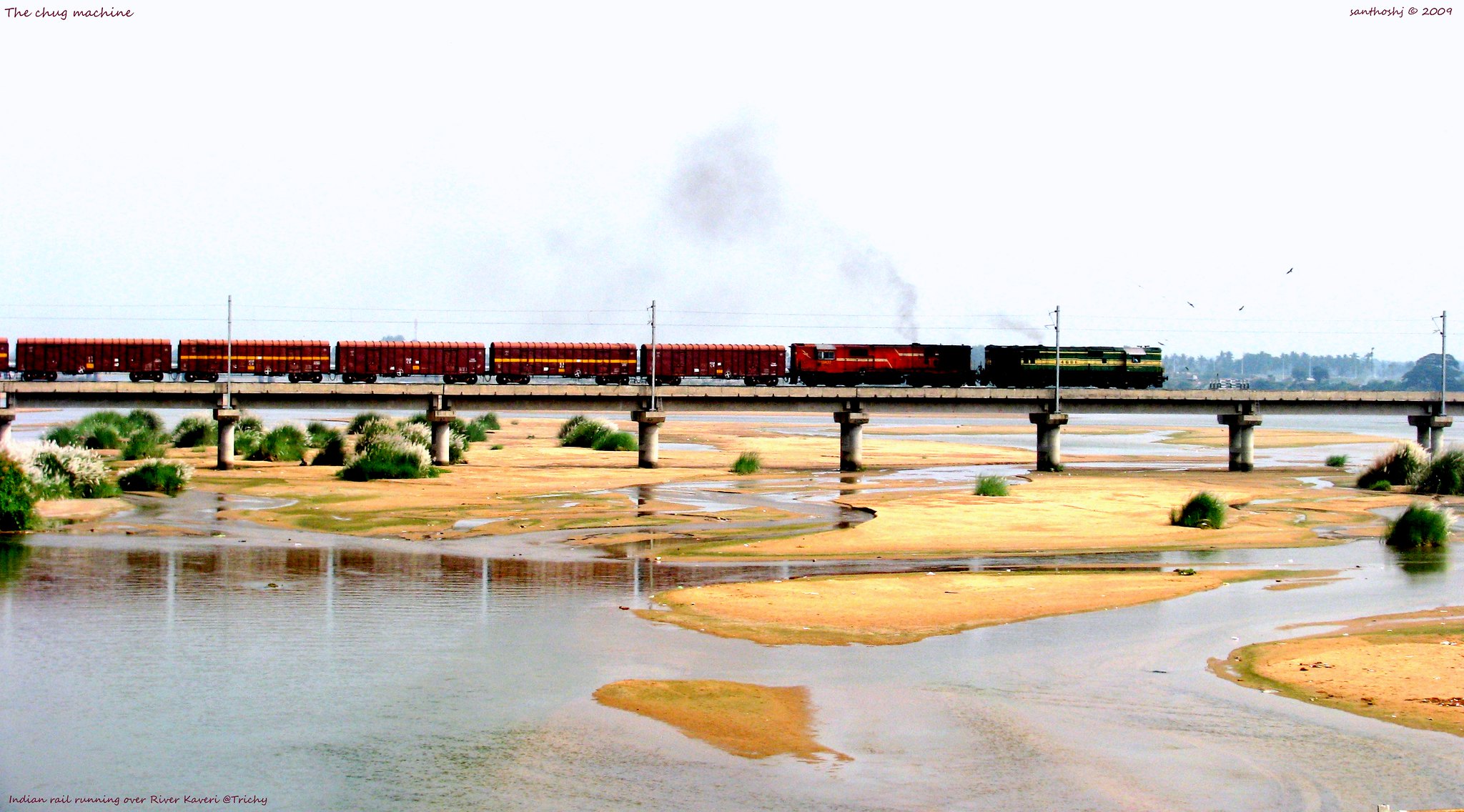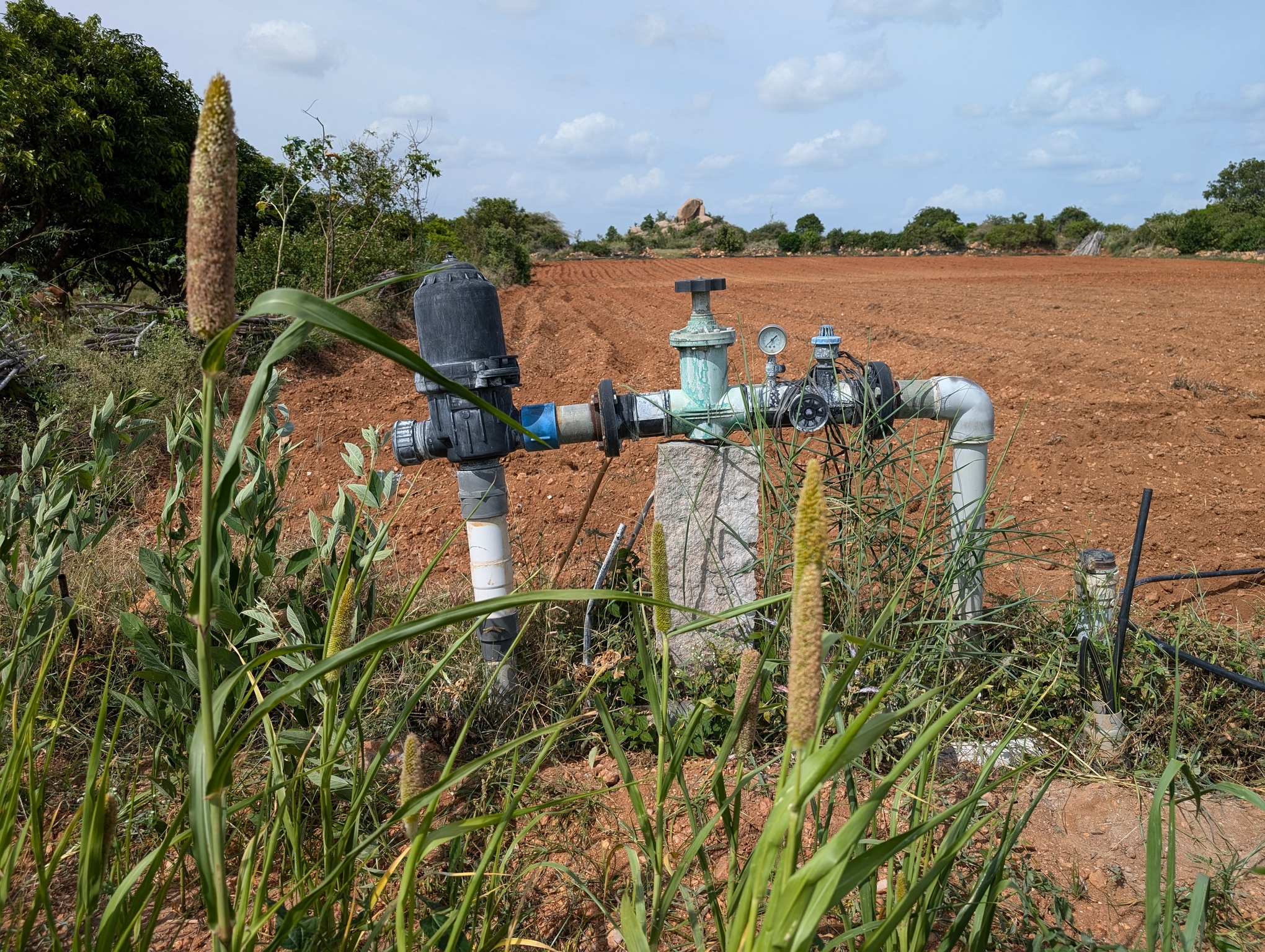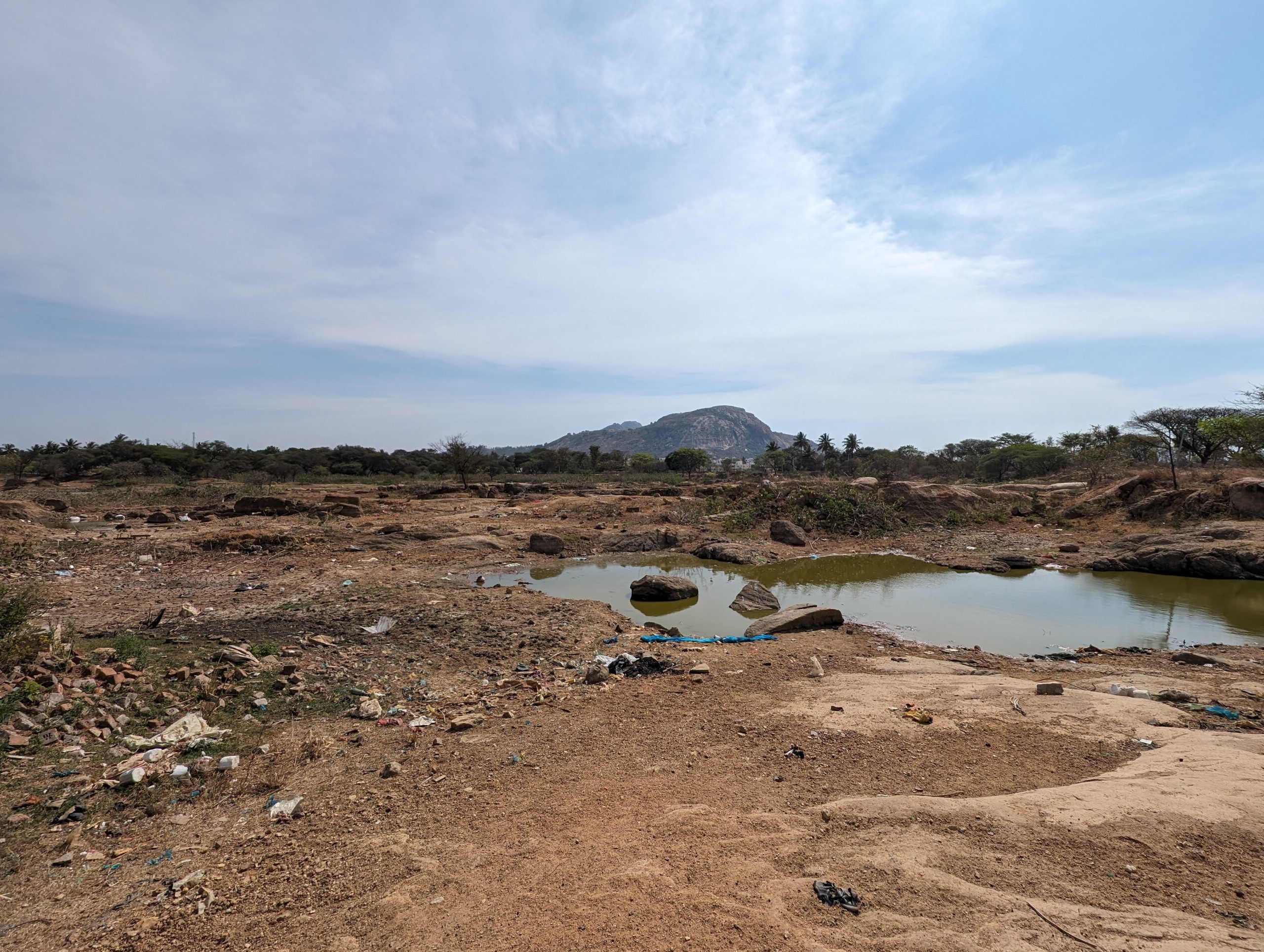Staff Gauge: A Guide to Measuring Aquifer Recharge through the Water Balance Method
The staff gauge is a tool used in watershed management to collect data for water balance calculations. The method involves installing a vertical ruler to measure changes in water levels in surface water bodies and storage structures, to record data at regular intervals. This data can be used to calculate a region’s water balance, which is a way to captures all inputs, outputs, and storage changes within a hydrological system over a specific period. Using the water balance equation, one can calculate groundwater recharge after accounting for losses through evaporation, which is not possible from secondary sources.
This is a low-cost method that can be adopted at a large scale. In India, especially in semi-arid regions, there is considerable spatial heterogeneity in rainfall patterns. This makes the staff gauge method especially useful as it can be easily applied to multiple water storage structures.
This document is Part 2 of the MEL Toolbox series. Click to view Part 1, Part 3, and Part 4.
About the MEL Toolbox
The MEL toolbox simplifies scientific methods for grassroots practitioners to effectively monitor, evaluate, and learn from watershed management interventions in India. It compiles existing methodologies into an accessible format to support impact assessments that are robust despite limited resources and short project timelines. By strengthening evaluation capacity, the toolbox enables users to maximise the benefits of watershed interventions. As a living document, it will evolve through testing with partner organisations and the inclusion of new methodologies to enhance MEL practices.
Fill these details to access the publication
Acknowledgements
Authors Ishita Jalan, Vivek Singh Grewal, Gopal Penny
Additional Contribution Aditya Vikram Jain, Yogita Dashora, Tarun Bharat Sangh
Editors Archita S, Syed Saad Ahmed, Ananya Revanna
Design Aparna Nambiar, Sarayu Neelakantan, Srilakshmi Viswanathan
Follow us to stay updated about our work






